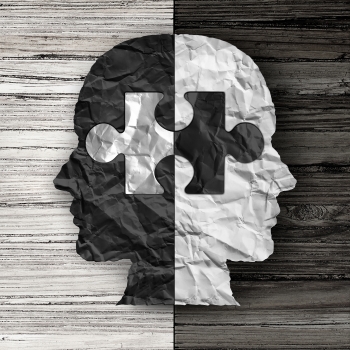
Whiteness, Trauma, and the Body
Part Two: Contacting White Fragility
This tip builds on concepts introduced in Whiteness, Trauma, and the Body: Part One. If you haven’t read Part One, click the link above to catch up, explore the suggested practice for a couple days, then come back to this page.
There are several key ideas from Part One that are foundational to this perspective on contacting white fragility. As you read the review below, notice how they land in your mind and body today. Do some feel more challenging than others? What really hits home for you?
Review of Part One
- White supremacy doesn’t just live in our brains. We carry it in our bodies in the form of automatic thoughts, feelings, and physical reactions. This is why we use the term white-body supremacy.
- The psychology of trauma can help us understand white-body supremacy. After something really stressful happens, our bodies automatically adapt to help us survive. We pass those adaptations on, generation to generation, through genetics, culture, and family structures.
- Most Black and Indigenous People of Color (BIPOC) know this kind of racialized trauma very well. It is the result of years of violence and oppression, which continue to this day.
- A different kind of racialized trauma lives in the bodies of most white folks in America. In lots of ways, it works to keep our bodies comfortable. But, that instinct to stay comfortable can also cause us to react with defensiveness, anger, guilt, or overwhelm that is out of proportion to the situation or inconsistent with our values.
- All of us can work toward healing racialized trauma, but we need to process it through our bodies, not just by thinking and learning.
- This series of tips is for white-bodied folks who are interested in processing whiteness as trauma in their bodies as a way to stay engaged, compassionate, and energized in anti-racist work.
Exercise: Telling a Story
One night, a woman was walking home alone. She had her headphones in and was listening to music. She lived in a city, and had to walk through a rough part of town to get back to her apartment, which was in a nice neighborhood just south of the city center. While she was walking two men on the opposite side of the road started to catcall her. “Hey, gorgeous! Stop and talk to us,” they called. The woman kept walking, ignoring the men harassing her.
There was a clinic in the neighborhood, and just outside of it a doctor wearing scrubs was taking a break. A nurse was also outside, smoking a cigarette. The doctor saw the men start to follow the woman and decided to help her. As she passed, the doctor gestured toward the men quizzically. The woman looked agitated and frightened. The doctor called to the men, gently but firmly.
“Hey, we don’t do that around here! Let this lady walk home in peace, please.”
The two men seemed deterred and sulked back to their stoop. The woman thanked the doctor and continued walking. As she turned the corner, she saw police lights and a parked police cruiser. Two police officers were talking to a person who seemed drunk and homeless. The homeless person had set up shop on a bench for the night, which the women knew wasn’t allowed in the city anymore. The woman walked by and kept her head down. As she reached her neighborhood she ran into one of her neighbors who was out walking his small dog. She stopped to talk and ask him how his work was going. He was a lawyer, working on a big case.
The woman reached her apartment and said hello to her children’s nanny. The nanny gave her an update on the children’s day and left for the night. The woman took off her suit and hung it up to take to the dry-cleaner’s the next day. She checked on her children, locked the door, and went to bed.
Chances are, you automatically pictured this story in your head while you read it. Most of us do! We’re going to use that as a helpful way of contacting white fragility by tuning into our body’s automatic reactions. Reflecting on the story, answer the following questions about the automatic pictures your brain generated as you read.
What was the race of:
- The woman?
- The catcalling men?
- The doctor?
- The nurse?
- The police officers?
- The homeless man?
- The lawyer?
- The nanny?
- The children?
- The people in the “rough” neighborhood?
- The people in the “nice” neighborhood?
What was the gender of:
- The doctor?
- The nurse?
- The police officers?
- The homeless person?
- The nanny?
The bad characters were: ________________________________
The good characters were:_______________________________
The characters in danger were:____________________________
-----------------------
Chances are, you pictured the protagonist of the story (the woman) as white. You may have also pictured the frightening (catcalling men), homeless, and lower professional status (nurse, nanny) characters as people of color (POC). You are also likely to have pictured the lawyer as white, the doctor as both male and white and the nurse and nanny as female. In addition, because you read that story in the context of an article you know is about race, you may have already experienced thoughts about how you should picture each character, maybe even adjusting your perceptions based on that expectation. Because of current events, you may also have noticed yourself picturing the police officers as white and dangerous, or felt scared for the homeless man.
Telling a story like this and noticing how our minds fill in the blanks for race (and gender) is one way to help us see the bias we carry in our bodies and minds. Normally, we don’t realize that we’re automatically coding the good, central, high status characters as white and the bad, peripheral, or low status characters as POC. That’s because most of this processing is happening implicitly, or outside our conscious awareness. This happens for all of us, and is the result of the way our brains respond to a culture of white supremacy. For this next exercise, let’s reflect on what happens when we encounter our biases:
- Three emotions that describe how I feel about the first exercise are:(1)_________________ (2)_________________ (3)_________________
- Three thoughts I have when I think about how I pictured the characters are:(1)_________________ (2)_________________ (3)_________________
- The feeling words that describe my body right now are:
Calm
Agitated
Nauseous
Jittery
Disengaged
Open
Centered
Upset
Numb
Excited
Fearful
Hostile
Guilty
Hopeful
Proud
Connected
Angry
Ashamed
Confused
Overwhelmed
Peaceful
Stressed
Resistant
Vulnerable
Heart racing
Squirmy
Tense
Interested
Contemptuous
Disgusted
Tired
Anxious
Hopeful
Reflecting on your own implicit bias, like we just did, is one way to connect with the transgenerational trauma of white-body supremacy. There are two parts to our reactions: (1) the actual bias we have when we read the story and (2) the feelings that come up when we’re confronted with this bias. Number (1) is pretty much the same across the board: most white-bodied people will picture the characters the same way (note: most BIPOC people do as well). There’s nothing new there. Number (2) is where we want to work.
Liberal white-bodied folks often react with a mixture of disengagement (“Okay so I’m racist and everyone is. Next.”), hostility (“This exercise is dumb and it didn’t work on me!”) and guilt (“I’m a horrible person!”). Scholar and activist Robin DiAngelo calls this mix of feelings white fragility. It comes up because modern white-bodied people are used to feeling as though conversations about race don’t have much to do with them. When this idea is challenged in exercises like the story reflection above, it causes friction in our minds and bodies. Our idea of ourselves as equitable and progressive comes up against the embodied reality of our prejudice. Contacting white fragility is something we feel. The embodied reality, that is, the message we’re getting from our bodies that makes it hard for us to link “Black” with “good, central character”, goes something like this: “White bodies are fragile, attractive, and not threatening. Black bodies are dangerous and need to be controlled, but are also potential sources of service and comfort.” This is not a thought we have consciously; it is the undercurrent of white-body supremacy that lives in all of us.
As you read this, see if you can let your flavor of white fragility, whatever it is in this moment, just be there. Explore what it would mean to notice these reactions for what they are - physical sensations, thoughts, and emotions - without needing to rationalize them or pretend they don’t exist. It is your responsibility to work with these reactions, but they are not your fault and you are not alone.
This week, notice how these reactions come up as you navigate your own neighborhood, work, and social life. Practice contacting white fragility by bringing an open, non-judging awareness to your feelings about race, without needing to push anything away. We do these exercises for the same reason your car mechanic has to open up the hood of your car to fix it - we can’t solve a problem we can’t see! If this resonates with you, you can also jot your reactions down on your phone when you notice them, like this:
Read an article about white fragility. Noticed squirming feeling in stomach and emotion of guilt. Thoughts go something like “I’m never going to be able to do enough.” There’s also an undercurrent of wanting to disengage, and maybe some resentment, too. White fragility is not born out of thin air. Like we discussed in Part One of this series, it is carried in our culture, our families, and ultimately in our physical bodies. It is born of a long history of trauma, the trauma of BIPOC people and the ancestral trauma inflicted upon the white-bodied Europeans who colonized this country. Part Three of this series will help you explore your own family history and how it may shape the way your body reacts to race today. If you would like to read more about this in the meantime, pick up Robin DiAngelo’s White Fragility and/or Resmaa Menakem’s My Grandmother’s Hands: Racialized Trauma and the Pathway to Mending Our Hearts and Bodies. You can also listen to a conversation between the two authors here. If you’d like help working with this topic in individual therapy you can schedule an appointment with one of our therapists by clicking here.
You can self schedule an in-person or virtual therapy session at the Center for Growth by calling (215) 922- LOVE (5683) x 100.
Our Guarantee: If after your first session you are not sold that you are working with the right therapist, do not hesitate to call our intake line at 215 922 5683 x 100 or Alex at (267) 324-9564 and ask to be rescheduled with another therapist. The choice of how you want to proceed is yours. Our only goal is to support you in becoming the best you possible.
For your convenience, we have brick and mortar offices and work with clients virtually in Connecticut, Delaware, Florida, New Jersey, New Mexico, Pennsylvania, and Virginia.
Physical Therapy Office Locations:
Ocean City Therapy Office 360 West Ave, Floor 1, Ocean City, NJ 08226
Mechanicsville Therapy Office 9044 Mann Drive, Mechanicsville Virginia, 23116
Society Hill Therapy Office 233 S. 6th Street, C-33, Philadelphia PA 19106
Art Museum / Fairmount Therapy Office 2401 Pennsylvania Ave, Suite 1a2, Philadelphia PA 19130
Providence Therapy Office 173 Waterman St. Providence, RI 02906
Fayetteville Therapy Office 101 Devant Street #606, Fayetteville GA 30214
Santa Fe Therapy Office, 2204 B Brothers Road, Santa Fe, New Mexico, 87505
Telemedicine Therapy Locations: We have therapists who are licensed to work in Connecticut, Delaware, Florida, Georgia, New Jersey, New Mexico, Pennsylvania and Virginia and Pennsylvania
Therapy Services Offered in Fayetteville, Ocean City, Mechanicsville, Philadelphia, Providence, Santa Fe:
Individual Counseling and therapy
Couples Counseling and marriage counseling
Teen Therapy and Adolescent Therapy and tweens and child counseling
Family Therapy and multi-generational counseling
Art Therapy and Counseling no art skills needed
ADHD Therapy and ADD, Dyslexia, Autism, Tourettes counseling
Anxiety, Panic, OCD Therapy and worry and fear support
Breaking the cycle of Codependency and being your own person
Overcoming Chronic Illness and Chronic Pain .
Depression Therapy and sadness, gloom, and upset support
Functional Neurological Disorder (FND) Therapy is a particular style of therapy designed for people with problems affecting their nervous system, how the brain and body send and receive signals.
Grief Therapy and loss, End of A Relationship, rejections, pregnancy and loss and therapy
Mindfulness Based Therapy and spirituality based therapy
Narcissistic Abuse Recovery child of, parent of, spouse of, sibling of a narcissist.
Sex Therapy and sexual function & dysfunction, sex addiction, sexual orientation and gender identity support
Trauma Therapy both emotional and sexual abuse, complex trauma, PTSD counseling
Divorce support
Affairs, Infidelity, Unfaithful, Cheating counseling
Parenting therapy
Personality disorder treatments Narcissist, Borderline, Histrionic
Setting Boundaries and identifying ones own Core Beliefs
Just name some of the Mental Health issues that we work with. Our goal is to help you Change and Achieve Your Dreams














